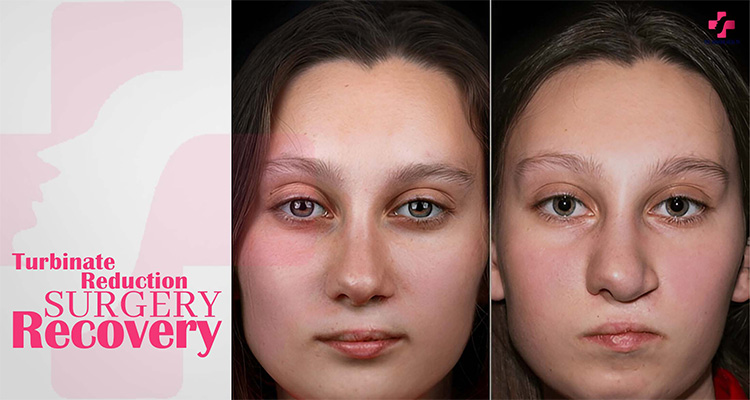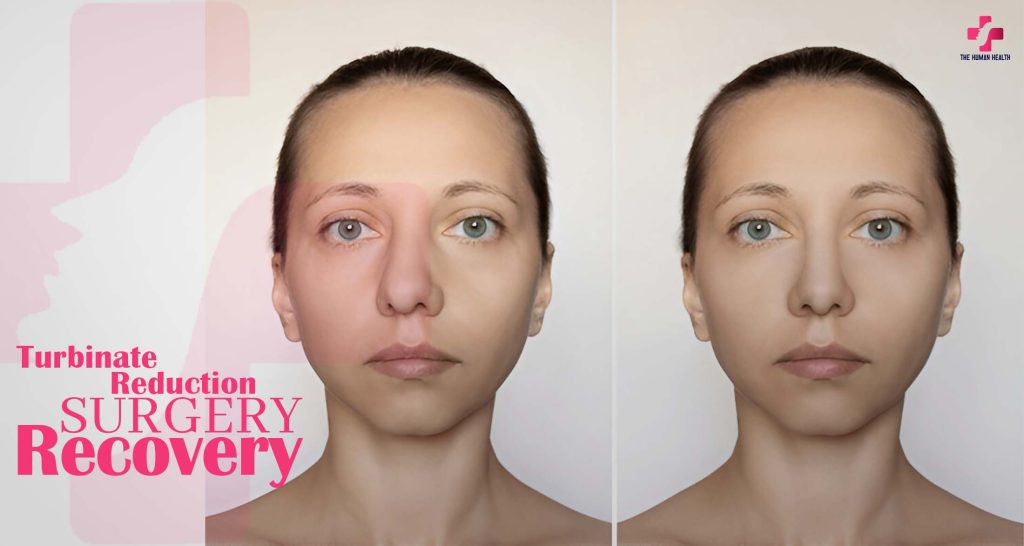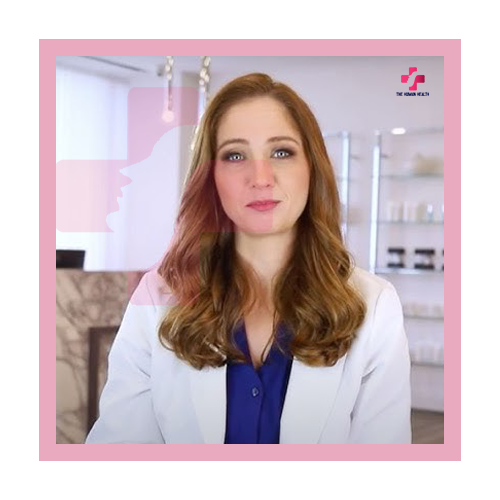Turbinate Reduction Surgery Recovery
Introduction
Breathing through your nose shouldn’t be a struggle. If congestion, snoring, or constant stuffiness won’t go away, turbinate reduction surgery recovery might be on your mind. I get it—I’ve been there, wondering if surgery
was worth it and worrying about what comes next. Whether you’re thinking about nasal turbinate reduction surgery or already have it scheduled, knowing what to expect makes healing easier. In this guide, I’ll keep things simple.
sharing recovery tips, common challenges, and ways to heal faster. Let’s make sure you’re ready for a smooth recovery!
What Is Turbinate Reduction Surgery?
Ever feel like your nose is always blocked, no matter how much you blow it? That’s often due to swollen turbinates—tiny structures inside your nose that help filter and humidify the air you breathe. But when they get too big, they can make breathing a daily struggle. That’s where nasal turbinate reduction surgery comes in. This procedure helps open up your nasal passages, making it easier to breathe freely.
There are different types of turbinate reduction surgery, depending on your needs:
- Inferior turbinate reduction surgery – Targets the lower turbinates, which are usually the main culprits in nasal congestion.
- Bilateral turbinate reduction surgery – Reduces turbinates on both sides of the nose to improve airflow.
- Septoplasty with turbinate reduction surgery – Fixes a deviated septum while also shrinking the turbinates for better breathing.
- Sinus surgery with turbinate reduction – If you have chronic sinus issues, your doctor may combine both procedures to maximize relief
No matter which type you have, the goal is the same: helping you breathe easier and enjoy life without constantly feeling stuffy. Up next, let’s talk about what to expect after surgery and how to recover smoothly.
The Recovery Timeline: What to Expect After Surgery
So, you had turbinate reduction surgery—now what? Recovery takes time, but knowing what’s normal helps. Let’s break it down step by step so you can heal faster and feel better.
First 24-48 Hours: Rest and Take It Easy
The first two days can be a little rough, but don’t worry—it’s part of the process. Here’s what to expect:
- Swelling and mild bleeding – Your nose might feel blocked, like a bad cold. A little bleeding is normal.
- Congestion – Breathing may feel harder before it gets better. It’s just swelling.
- Rest is key – Keep your head up when you sleep (two pillows help!).
- Stay hydrated – Drink water and use saline sprays (if your doctor allows).
First Week: Slowly Getting Better
You’re on the way to feeling normal again! But some congestion may still stick around.
- You’ll feel a little better – But your nose might still be stuffy.
- Saline rinses help – They wash out dried blood and mucus.
- No nose-blowing! – It can cause bleeding, so be gentle.
Weeks 2-4: Big Improvements!
Now the good stuff happens! You’ll finally notice a real difference.
- Breathing gets easier – Less stuffiness, more fresh air.
- More energy – You’ll feel like yourself again.
- Most normal activities are okay – But don’t push it too hard yet.
6+ Weeks: Full Recovery!
By now, your nose should be working way better.
- Breathing feels natural
- Congestion is mostly gone
- Minimal dryness or scabbing
For most people, nasal turbinate reduction surgery is life-changing. If you still have issues, check with your doctor. Otherwise, enjoy breathing freely again!
Up next: Let’s talk about how to make recovery easier with simple, expert-backed tips.
Tips for a Smooth Recovery from Turbinate Reduction Surgery
Healing after turbinate reduction surgery doesn’t have to be hard. With the right care, you’ll feel better fast. Here are some easy tips to help you recover smoothly.
1. Reduce Swelling and Feel More Comfortable
Right after surgery, your nose might feel puffy or blocked. That’s normal! Try these simple tricks:
- Sleep with your head up – Use two pillows to reduce swelling.
- Use a cold pack – Place it on your cheeks (not your nose) to ease discomfort.
- Drink lots of water – Staying hydrated helps your nose heal.
- Take it easy – Avoid heavy lifting or bending over for at least a week.
2. Keep Your Nose Moist
Your doctor may tell you to use saline rinses—and they really help!
- Rinse when allowed – Usually after the first day or two.
- Spray with saline – It keeps your nose from getting dry.
- Run a humidifier – Moist air makes breathing easier.
3. Avoid These Common Mistakes
Some things can slow down healing, so be careful!
🚫 No nose-blowing – It can cause bleeding.
🚫 No heavy workouts – Rest for at least two weeks.
🚫 No dry air – Stay away from smoke, dust, and strong smells.
4. Sleep the Right Way
How you sleep makes a big difference in healing.
- Lay on your back – It keeps pressure off your nose.
- Keep your head up – Helps with swelling and drainage.
- Use extra pillows – Makes breathing easier.
Final Thought: Take It Slow
Every turbinate reduction surgery recovery is different, so don’t stress! Follow these tips, and you’ll be breathing better in no time.
Next up: When to call your doctor and what side effects to expect.
Potential Side Effects and When to Call Your Doctor
Let’s be honest—turbinate reduction surgery recovery isn’t the most fun, but it’s not too bad either. Most people feel stuffy, tired, and a little sore. That’s normal! But how do you know when to relax and when to worry? Let’s keep it simple.
Normal After-Surgery Symptoms (Nothing to Stress About!)
Feeling like you have a bad cold? That’s part of healing! Here’s what’s totally normal:
✔ Stuffy nose – Swelling makes it feel blocked at first. It gets better!
✔ Mild pain – It might feel like pressure in your nose or face. Pain meds help.
✔ Light bleeding – A little blood is okay. Just don’t blow your nose too soon.
✔ Scabs & dryness – Your nose is healing. Use saline spray to keep it comfy.
When to Call Your Doctor
Most recovery from turbinate reduction surgery is smooth, but if you notice these signs, don’t wait—call your doctor:
🚨 Heavy bleeding – A few drops are fine, but nonstop bleeding isn’t.
🚨 Fever over 101°F – This could mean an infection.
🚨 Severe pain – Some discomfort is normal, but extreme pain isn’t.
🚨 Trouble breathing – Some swelling is expected, but you should still get air.
🚨 Bad-smelling discharge – Yellow or green mucus could mean infection.
How to Handle Scabs & Dryness
Dry nose? I’ve been there! Try these simple tricks:
💧 Saline spray – Keeps your nose moist and comfy.
🌿 Use a humidifier – Dry air slows healing. A humidifier helps.
🚫 Don’t pick scabs – Let them fall off naturally.
🛑 Skip strong smells – Perfume, smoke, or cleaning sprays can make things worse.
Final Thought: Trust Your Body
Healing from nasal turbinate reduction surgery takes time. Most people feel better in weeks, but listen to your body. If something feels off, call your doctor.
Next up: How much does turbinate reduction surgery cost? Let’s break it down!

How Much Does Turbinate Reduction Surgery Cost?
Let’s talk money. Turbinate reduction surgery isn’t free, but if breathing feels like a daily struggle, it can be worth it. So, how much does it cost? Well, that depends on a few things.
The Cost Breakdown
The cost of turbinate reduction surgery usually ranges from $2,000 to $7,000. What’s included?
✔ Surgeon’s fee – More experience often means a higher price.
✔ Facility fees – Hospitals charge more than outpatient centers.
✔ Anesthesia – If you need sedation, this adds to the bill.
✔ Follow-ups – Some doctors include them, others don’t.
What Affects the Price?
Several factors can change the cost:
📍 Where you live – Big cities usually cost more.
👨⚕️ Your doctor’s skill – Top-rated surgeons charge higher fees.
🏥 Surgery location – Hospitals tend to be pricier.
🩺 Extra procedures – If you’re also having septoplasty turbinate reduction surgery or sinus surgery turbinate reduction, expect a bigger bill.
Will Insurance Cover It?
Here’s the good news: Insurance may cover part or all of the cost—but only if the surgery is medically necessary. If you’re getting it to fix breathing issues, you might get help. But if it’s elective (like for minor snoring), you’ll probably pay out of pocket.
To check:
✅ Call your insurance and ask about turbinate reduction surgery cost with insurance.
✅ Get pre-approved to avoid unexpected bills.
✅ Ask about co-pays and deductibles so you know what you’ll owe.
Final Thoughts
The cost of turbinate reduction surgery may seem high, but if you’ve been struggling to breathe, it can be life-changing. Plus, if insurance helps, the price might not be as bad as you think! Always check with your doctor and provider to get a clear estimate.
Patient Reviews: Real Experiences With Turbinate Reduction Surgery Recovery
Thinking about turbinate reduction surgery? Hearing from real people can help. I’ve gathered patient reviews to give you the honest scoop—what’s great, what’s tough, and how recovery really feels.
Is Recovery Easy? Here’s What People Say
Let’s be honest—recovery from turbinate reduction surgery isn’t fun, but it’s not as bad as you might think. Here’s what most people report:
✔ The first days are tough – Many feel like they have a bad cold. “My nose felt totally blocked, but my doctor said it was just swelling,” one patient said.
✔ Saline rinses help a lot – Almost everyone says nasal rinses make a big difference. “I was nervous to try them, but they cleared out dried blood and helped me heal faster.”
✔ Breathing takes time to improve – Some notice a change right away, while others need a few weeks. “At week three, I finally took a deep breath and felt the difference,” a patient shared.
Does the Surgery Actually Help?
For most, the answer is yes!
🌟 “Best choice ever. I can finally breathe at night!” 🌟 “I had no idea how bad my congestion was until I took my first clear breath.” 🌟 “My snoring is almost gone—my partner sleeps better too!”
Some people with a deviated septum or chronic sinus issues say they got even better results by combining turbinate reduction with septoplasty or sinus surgery.
What Are the Biggest Challenges?
Even happy patients have some struggles. Here’s what they found hardest:
😷 Congestion gets worse before it gets better – “I panicked when I couldn’t breathe well at first. By week four, it was a whole new world.”
💤 Sleeping is tricky – “Lying flat made it worse. Sleeping with extra pillows helped a lot.”
💸 Costs vary – Some insurance plans cover it if it’s needed for breathing problems. Others leave patients with a big bill. If you’re wondering about turbinate reduction surgery cost with insurance, check with your provider before scheduling.
Final Take: Is It Worth It?
Most people say yes. If you have constant congestion, bilateral turbinate reduction surgery can be a game-changer. While recovery from turbinate reduction surgery takes patience, the results are worth it. “I never knew how bad my breathing was until I finally felt what normal is,” one patient said.
Still unsure? Talk to your doctor, weigh your options, and remember—better breathing can change your life!

Final Thoughts: Is Turbinate Reduction Surgery Worth It?
So, after everything, is turbinate reduction surgery worth it? If you’ve spent years struggling to breathe, waking up congested, or feeling like your nose is always blocked, the answer is probably yes.
Recovery takes time, but it’s not as bad as you might think. At first, your nose feels stuffy, and you might wonder if it was the right choice. But give it a few weeks. One day, you’ll take a deep breath and realize—wow, this is what normal breathing feels like.
Who Benefits Most? If you have chronic nasal congestion, trouble sleeping because of blocked airways, or sinus issues that never seem to go away, this surgery can be life-changing. Many people who get bilateral turbinate reduction surgery or combine it with septoplasty say they finally feel relief after years of struggle.
A Few Final Tips Healing is different for everyone, but the key is patience. Follow your doctor’s advice, take it easy, and give your body time to adjust. The first couple of weeks might feel slow, but the results are worth it.
Still unsure? Talk to your doctor. Ask questions. Make sure it’s the right choice for you. But if breathing feels like a daily battle, this surgery could be the fresh start you’ve been waiting for. And trust me—there’s nothing better than finally being able to breathe freely again!
FAQs About Turbinate Reduction Surgery
1. What is turbinate reduction surgery?
It’s a simple surgery that shrinks swollen turbinates in your nose. This helps you breathe better and feel less stuffy.
2. How long does turbinate reduction surgery take?
It’s quick! Most procedures take 15 to 45 minutes. Some need local anesthesia, while others use general.
3. Does turbinate reduction surgery hurt?
Not much! You might feel pressure or mild pain, like a stuffy nose. Pain medicine helps if needed.
4. How long does it take to heal from turbinate reduction surgery?
Most people feel better in 2 to 6 weeks. The first days are the hardest, but breathing gets easier fast.
5. When will I breathe better after surgery?
At first, you’ll feel stuffy. By weeks 2 to 4, it gets better. Full relief comes around week 6.
6. What are the side effects of this surgery?
You may feel stuffy, have mild bleeding, or notice dryness. These go away as you heal.
7. Can I blow my nose after surgery?
Nope! Blowing too soon can cause bleeding. Use saline spray instead
Authorized Advisor
Dr. Angela Sturm M.D.
Dr. Angela Sturm is a double board-certified facial plastic surgeon and one of Houston’s most respected and accomplished female facial plastic surgeons. While skilled in all areas of facial plastic surgery, Dr. Sturm focuses on facelifts and rhinoplasty. Known for her precision, attention to detail, and artistic approach, she delivers natural-looking results tailored to each patient’s unique needs.
Call : (281) 626-8469
Turbinate Reduction Surgery Recovery Turbinate Reduction Surgery Recovery Turbinate Reduction Surgery Recovery Turbinate Reduction Surgery Recovery Turbinate Reduction Surgery Recovery Turbinate Reduction Surgery Recovery Turbinate Reduction Surgery Recovery Turbinate Reduction Surgery Recovery Turbinate Reduction Surgery Recovery Turbinate Reduction Surgery Recovery Turbinate Reduction Surgery Recovery Turbinate Reduction Surgery Recovery Turbinate Reduction Surgery Recovery Turbinate Reduction Surgery Recovery Turbinate Reduction Surgery Recovery Turbinate Reduction Surgery Recovery Turbinate Reduction Surgery Recovery Turbinate Reduction Surgery Recovery Turbinate Reduction Surgery Recovery Turbinate Reduction Surgery Recovery Turbinate Reduction Surgery Recovery Turbinate Reduction Surgery Recovery Turbinate Reduction Surgery Recovery





